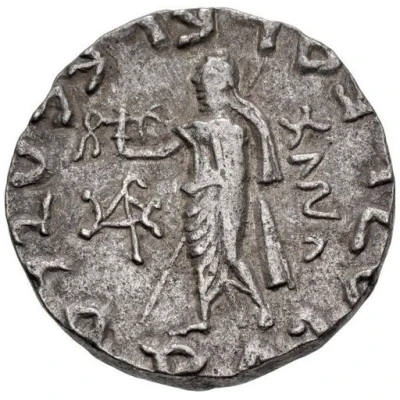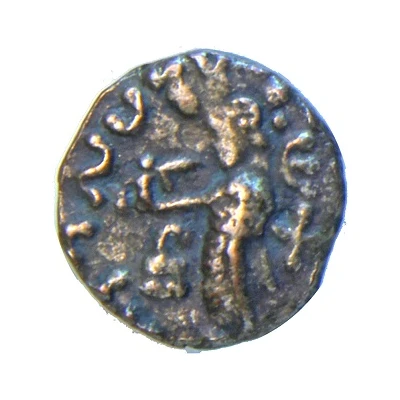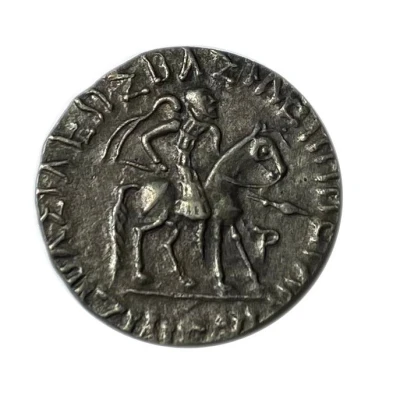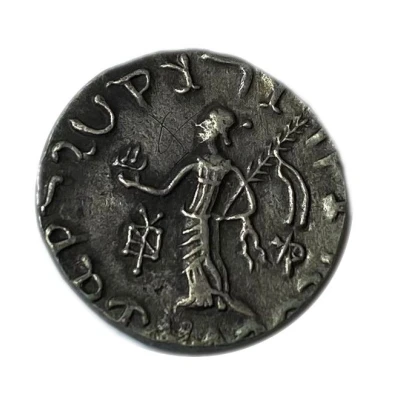


© Classical Numismatic Group, Inc.
Tetradrachm - Azes II Taxila 58 BC - 12 BC
| Silver | 9.9 g | 25 mm |
| Issuer | Indo-Scythian Kingdom |
|---|---|
| King | Azes II ("Aζης) (35 BC - 12 BC) |
| Type | Standard circulation coin |
| Years | 58 BC - 12 BC |
| Value | Tetradrachm (4) |
| Currency | Drachm (200 BC to 400 AC) |
| Composition | Silver |
| Weight | 9.9 g |
| Diameter | 25 mm |
| Shape | Round (irregular) |
| Technique | Hammered |
| Orientation | Variable alignment ↺ |
| Demonetized | Yes |
| Updated | 2024-10-10 |
| Numista | N#380300 |
|---|---|
| Rarity index | 93% |
Reverse
Zeus standing left, holding Nike and long scepter; monogram to left; to right, M above dhram in Kharosthi.
Script: Kharosthi
Translation: MAHARAJASA RAJADIRAJASU MAHATASA AYASA
Comment
Most obverse dies from this series show the king holding only a whip, however on this example the king is also holding something in his left hand. It appears to be a standard or labarum, but it is uncertain.Interesting fact
One interesting fact about the Tetradrachm - Azes II (Taxila) coin from the Indo-Scythian Kingdom is that it features a unique blend of Greek and Indian influences in its design. The coin's obverse side features a portrait of King Azes II, while the reverse side depicts a seated Zeus, a common motif in Greek coinage. However, the coin's design also incorporates Indian elements, such as the use of the Kharoshthi script and the depiction of a lion, which is a common motif in Indian art. This blending of cultural influences reflects the Indo-Scythian Kingdom's position as a crossroads between the Greek and Indian worlds.



